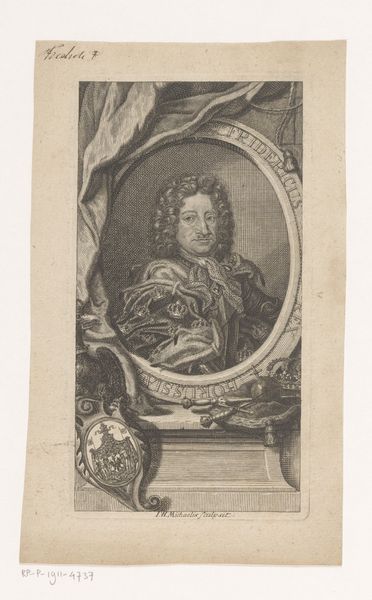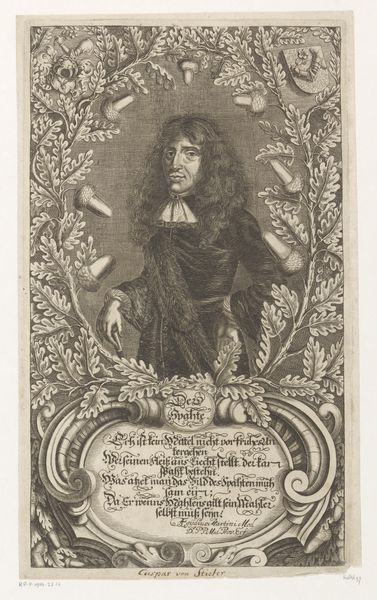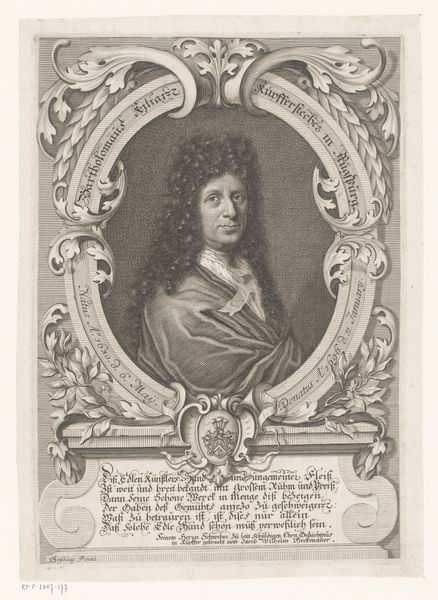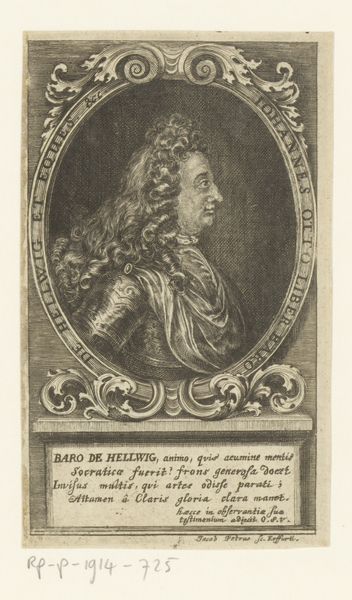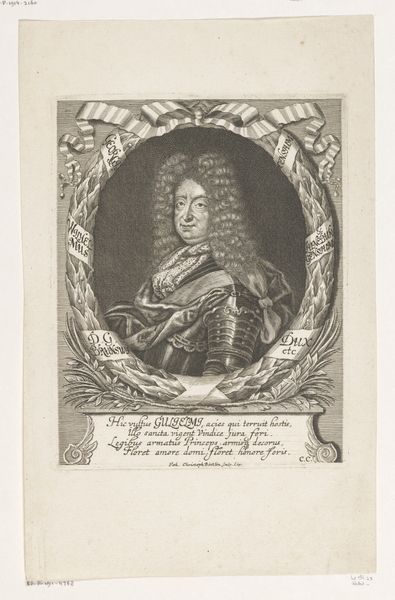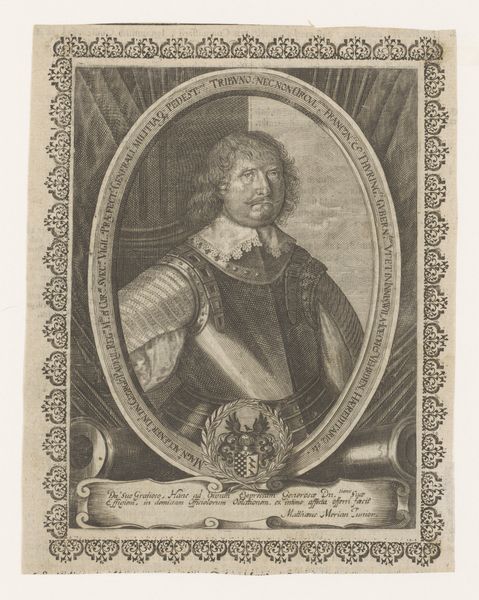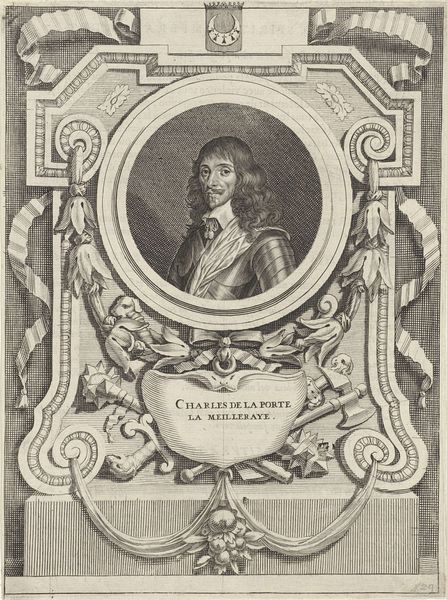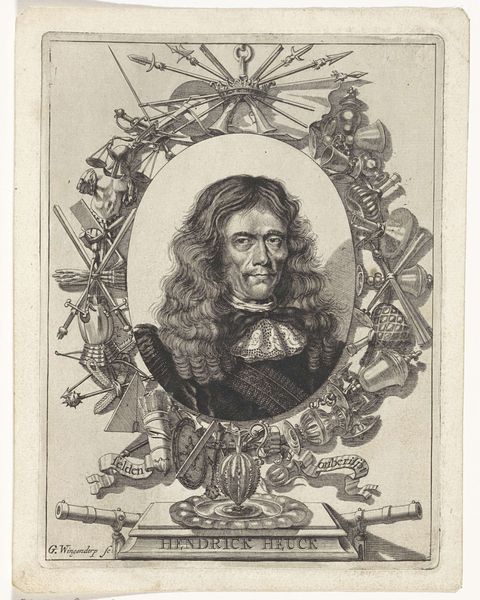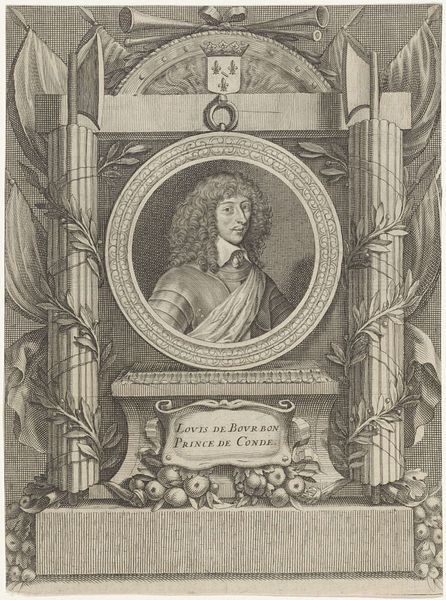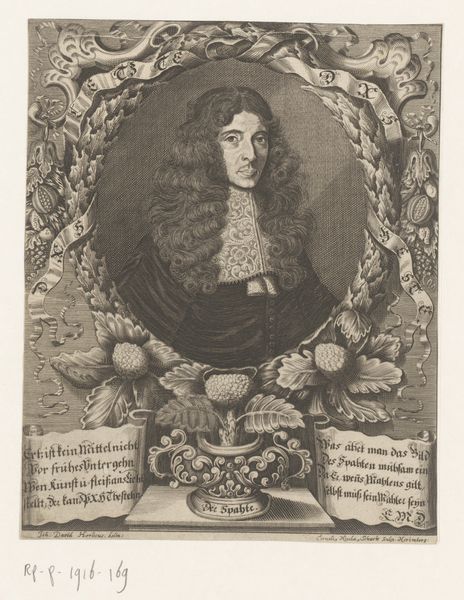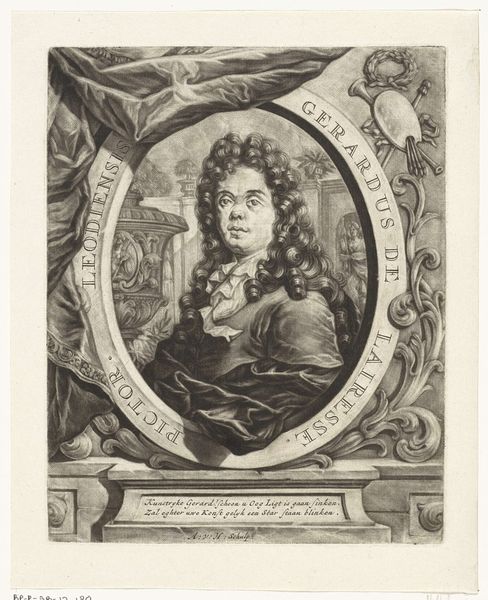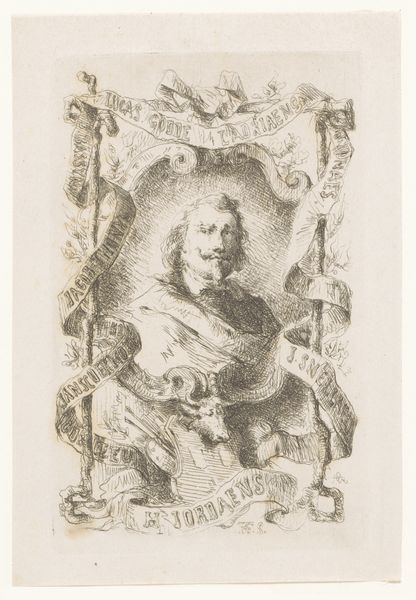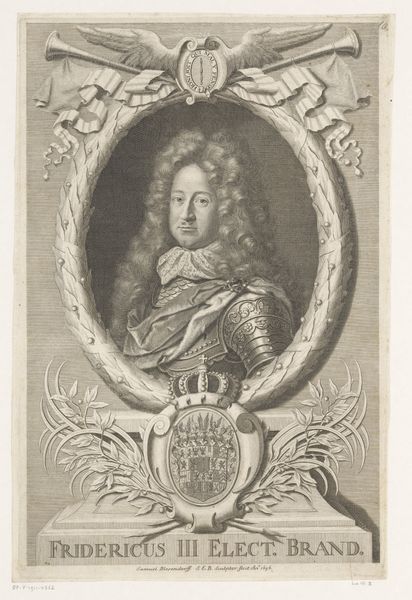
print, engraving
#
portrait
#
self-portrait
#
baroque
# print
#
old engraving style
#
pencil drawing
#
engraving
Dimensions: height 201 mm, width 150 mm
Copyright: Rijks Museum: Open Domain
Curator: Welcome. We are looking at Pieter van der Hulst’s Self-Portrait from 1686, an engraving that captures the artist at work. Editor: There's an incredible amount of detail crammed into this relatively small print! The fine lines give it a delicate, almost ethereal quality. It's busy but captivating. Curator: The framing is quite complex, isn't it? We see Van der Hulst surrounded by an oval border with an inscription naming the artist, his lineage, and place of birth. The work situates him very precisely within his social context. Editor: I agree; there's also a real dynamism in the composition. Look at the way the artist's gaze pulls you in, counteracted by the painting on the canvas which leads us away towards what appears to be another image, the one on the canvas within the image? Curator: Absolutely! And consider the influence of Van der Hulst's travels and his professional identity as it plays into that. His presence in Italy and Savoy. The poem that is etched in Dutch at the bottom, gives further meaning to this. It talks of how Pieter's art mirrors his life’s experiences and achievements in different lands. Editor: Indeed, he wants to represent a life fully lived as a creative soul. There's such attention to textures here; the soft curls of his hair, and the rough surface of the canvas he works on… a fascinating juxtaposition. It seems less interested in presenting raw emotional depth and rather is focusing on technique. Curator: True, emotional display wasn't exactly the point in 17th-century Dutch portraiture! The goal was more often to portray status and convey the artist's contributions to society. Here, his travels become a status symbol too, a kind of intellectual pedigree that would impress potential clients and collaborators. Editor: It feels, at the time, like he really needed this sort of professional stamp for posterity! Curator: In fact! These prints would have served an important promotional purpose for an artist like Van der Hulst, showcasing not just his likeness, but the range of skills he had on offer to wealthy patrons. Editor: Yes, this engraving isn’t simply a likeness; it’s a statement, both visual and textual. It tells you what you're seeing, and tells you how he wants to be seen. Curator: In looking closely at "Zelfportret van Pieter van der Hulst," we have gained new insight not just into this engraving's surface features, but into its multifaceted layers of social, historical and political meaning. Editor: By focusing on form and context, we get a complete impression of Van der Hulst as both craftsman and persona!
Comments
No comments
Be the first to comment and join the conversation on the ultimate creative platform.
